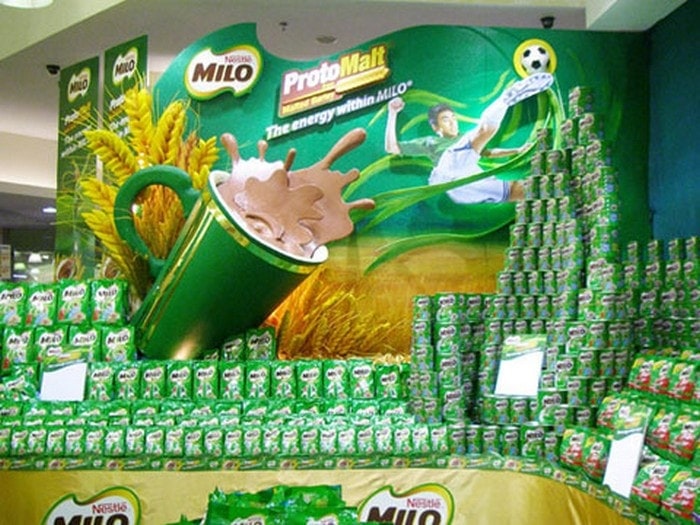Merchandising is any practice that helps a retailer to sell his merchandise to his customers. In a retail store, the meaning of merchandising is the varieties of products available in-store for selling purpose and their display that attracts the attention of customers and lure them into buying those products.
In merchandising you either work for a store or you work for an independent distributor. Being a professional merchandiser, you will not only know about the products such as coffee, tea, noodles, etc. but you will also test other “vendors” similar products as you do your job.
Working as a merchandiser, you will always find yourself struggling to provide shelf space to products to be sold. In the retail business, the meaning of visual display merchandising is the sale of products with the help of selection, products design, pricing, packaging, and display that rouses customers to buy more and more from the store. i
n addition to this, discounts, displays and physical presentation of products and which product should be suggested to which customer and in what circumstances.
Want to stay ahead in the merchandising game?
According to Statista, global retail e-commerce sales amounted to $4.9 trillion in 2021 and are projected to reach $7.4 trillion by 2025. This significant growth emphasizes the importance of effective digital merchandising strategies to capitalize on the expanding online market.
Additionally, a study by Accenture found that 91% of consumers are more likely to shop with brands that recognize, remember, and provide relevant offers and recommendations. This highlights the value of personalized product merchandising in enhancing customer loyalty and driving sales.
The merchandising is as old as trade itself. The ancient Elba tablets (Dated 2500BC to 2250BC) contain information about the commerce and trade of that time. Therefore, it is important to understand the different types of merchandise.
Table of Contents
Types of Merchandising
1) Product Merchandising
Product merchandising consists of all types of promotional activities operated to sell merchandise. It discusses both online and in-store products. However, it is most of the times confused with service merchandising (as promotional activities are used to sell services).
Product merchandising refers to both digitals as well as physical products. Therefore, the definition of product merchandising depends on whether products are sold in-store or online. It consists of all activities such as activities that take place online like online search or web design and in-store promotional activities like end caps and shelf display, etc.
2) Visual Merchandising
In the retail industry, visual merchandising denotes all kind of display techniques used to emphasize the benefits and appearance of services and products being sold.
It can also include lighting, spacing, and designing. The term visual merchandising can be used for both online as well as in-store merchandising.
As per digital retail experience, the use of web design, video, gifs, and other visual design elements which are used to emphasize the products are part of visual merchandising.
Whereas in in-store retail, visual merchandising consists of all activities such as the selection of color palette, banner and product alignment, and three-dimensional display, etc.
3) Retail Merchandising
Retailing merchandising includes all marketing and promotional activities which are somehow used to sell products to consumers in brick and mortar store. Here we are mentioning only brick and mortar stores. However, the definition is true for all other types of physical stores such as annual pop up events, etc.
The term is usually used as digital merchandising because of the emergence of it in the past few decades. This trend is going to continue in future also because at present there are a greater number of the online store than the physical stores.
4) Omnichannel merchandising
Omnichannel merchandising refers to creating unified customers experience at all possible places that can come across a customer in any way. For both physical store or online retailers, it is important to create omnichannel merchandising to reach their customers in every possible way.
These days omnichannel is also referred to as omnichannel retailing, and more and more retailers are taking interest into it because retailing is turning into a customer-driven industry and retailers understand the importance of reaching customers in any way possible and especially in the way a which they feel comfortable.
5) Digital merchandising
Digital merchandising includes all types of activities used to promote products on the internet. It is also referred to as online merchandising or e-commerce.
It includes all activities like website promotions, digital products display, email marketing, social media marketing, digital marketing, etc.
Unlike retail merchandising the term which was originally used to for physical retail store merchandising but with the passage of time and penetration of internet in retail business the term is being used for both platforms, but the digital merchandising is truly refers to digital retail business.
Advantages of merchandising
1) Increased Sales
If merchandising is used properly, then it can make a positive effect on retail sales and the revenue generation, which is the sole goal of every business.
All techniques such as place, pricing, product packaging, display, sales sign, arrangement, and promotional marketing not only improve customers shopping experience but also increase sales.
It also helps you make more profit from the store without expanding your business or renovating your store. People like to shop in a place where they feel good. Good merchandising will make your customers come back to your store again and again for shopping.
2) Brings customers in
Merchandising is an effective technique to bring customers in the store who don’t come in the market for shopping purpose. Increased traffic increases the chances of more sales.
Therefore, your merchandising begins at the entry gate of your store. People get attracted by the display they see outside and enter the store to look further.
Everything such as manicured grounds, bright signage, a well-kept retail structure, and a clean parking lot are all factors that helps a shopper to make the decision to shop in your store or not. Whether they will buy something in your store or not will depend on the pricing, packaging, and product line in your store.
3) Attractive Spaces
Rearranging shelves, aisles, the general layout of the store’s space, and display fixture might require for proper merchandising. Interior space should be simple and straight so that customers do not have to struggle much to locate products, and they can reach products on sales easily.
An effective strategy gives you advantages of more and flexible space, and you can use this space to handle more traffic efficiently. In this way, you can make shopping a pleasing experience rather than a tiring experience for your customers.
By using proper merchandising, you can attract more customers and increase the perception of your brand in the eyes of your customers.
Disadvantages of merchandising
1) Once is not enough
One of the disadvantages is that it requires to be changed frequently with the changing expectations of customers and to be able to get new customers to your store. A merchandising style is needed to be changed frequently before it becomes monotonous for customers.
Small business owners who can’t afford many employees have to take care of everything, and they would not want to take extra burden of merchandising on their shoulders.
2) Demands on staff
With the increased traffic in your store, you would need to have more staff members to handle those customers. With more people in the store of everyday basis, more deliveries and more sales come. There will be more customer service issues.
You will want your employees to work for longer hours. Increased work and more workers are two disadvantages of good merchandising.
3) Expense
Making changes in the store, adding new fixtures, buying new signage, and changing the overall appearance of your store can cost you a lot.
However, effective merchandising will ensure you more profit, but you will have to bear all the expenses in the short run. You must be ready to make the initial investments to reap the rewards later.
Merchandising strategies that you can use to improve sales:
Different strategies work best for a different type of retail business and the type of merchandise. They must be used for different purposes such as increasing sales, developing customers loyalty, increasing awareness of your brand, and increasing foot traffic in the store, etc.
Followings are the few most popular merchandising strategies that you can also use in your store:
- Decorate Window display and in-door in unique shapes.
- Use interactive displays that use sound, scent, and motion technology.
- Make themes to use products together, for example, school lunch, Christmas, barbeque season, etc.
- Samples and giveaways.
- in-store demonstration and free tasting sessions.
- Well-stocked shelves and display.
- well-planned and eye-level display of products.
- Shelf signage.
Liked this post? Check out the complete series on Retailing



the realone